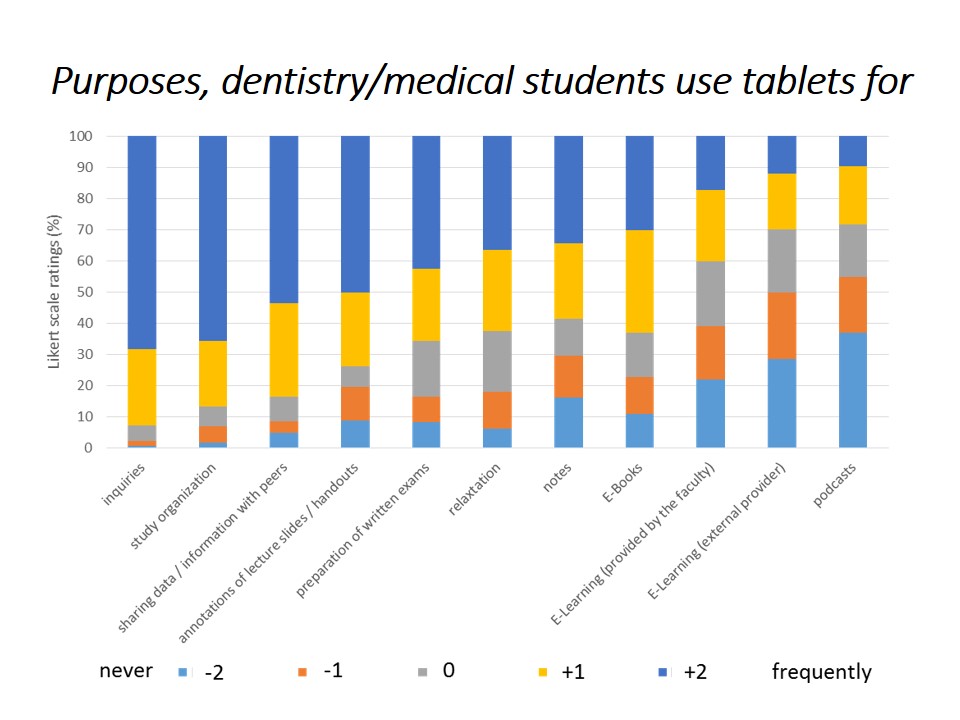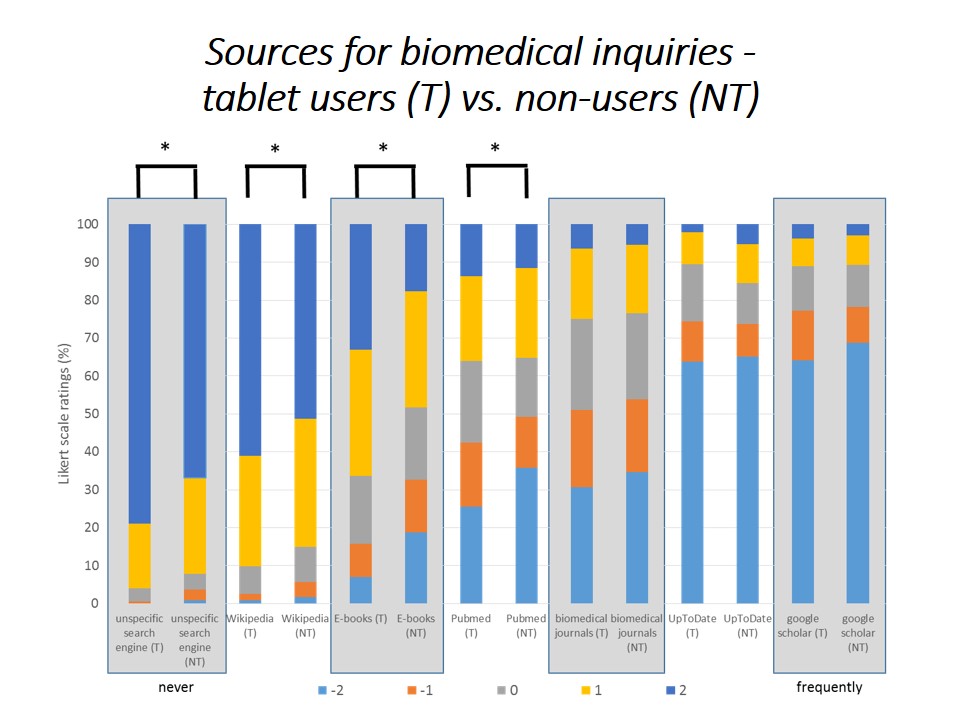
| Theme: 8II Mobile learning | |||
 |
||||||
| Tablet use in medical education |
 |
|||||
|
||||||
Tablet computers (tablets) definitely found their way into medical education. They offer new perspectives for teaching and learning and are increasingly used by medical students as well as instructors. However they also bear the risk to distract students from learning.
Dissemination, usage behavior and attitudes towards tablet computers were assessed among medical and dentistry students at the medical faculty of Muenster, Germany, using an online questionnaire. Students of all academic years were invited to take part in the study voluntarily.
Mobile devices become increasingly important in medical education. However, according to our findings it is a debatable point whether students currently use tablets in a purposeful way.
Medical schools have to adapt to the advance of tablets, support students to use them in a beneficial way and dicuss possible secondary effects.
The authors thank dentistry and medical students of the University of Muenster / Germany for having participated in this study.
In total 942 students (60.4 % female, RR 39.4 %) took part in the survey. Significantly more male (40.7 %) than female (30.4 %) students owned a tablet (n=351; p = 0.04) – compared to 81.5 % (M) / 78.6 % (F) smartphones users.The three major purposes tablets are used for were 1) inquiries 2) study organization 3) communication and sharing data with peers. 
95.4% of the tablet users agreed that tablets are beneficial for learning, though 22.3 % think that they are not fully developed for this purpose and 54.4% see the danger of being distracted from educational activities. Respective estimations of non-tablet users were much worse, however 14.9% of them intended to buy a tablet within the next 6 month. No gender differences were found besides that female tablet users prefer handwritten to digital notes on tablets compared to male tablet users (OR 2.012, p=0.02).

Tablet users as well as non-users predominantely use unspecific search engines, wikipedia and e-books for biomedical inquiries - far beyond information resources such as Pubmed and UpToDate. In general tablet users seem to undertake more inquiries than non-users.


 Send Email
Send Email